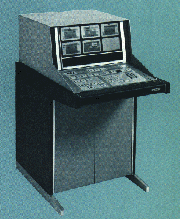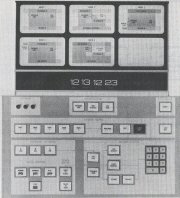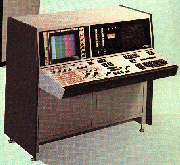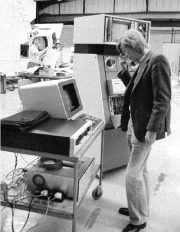  Home Home
  Honor Roll Honor Roll
  Ampex Ampex
  CDL CDL
  CMX CMX
  Convergence Convergence
  Datatron Datatron
  EECO EECO
  EPIC EPIC
  ISC ISC
  Mach One Mach One
  RCA RCA
  Smith Smith
  EDL's EDL's
  Offline Offline
  PC Editors PC Editors
  Specials Specials
  Sweetening Sweetening
  Telecine Telecine
  HS100/200 HS100/200
  TRT-1B TRT-1B
  VR-1000 VR-1000
  Credits Credits
 Links Links
 Japanese Japanese
|


With the advent of the Electronic Editor, it was possible to "splice" the
tape with out physically cutting it. Electronic edits could be
repeated, and they played back as smoothly as a camera switch.
|
|

Combined with the Electronic Editor, Editec gave frame accurate
control to editing. It was now possible to preview and repeat edits
as often as needed.
|



|
The RA-4000 was an editor designed to match the unrivaled speed of the
Ampex AVR-1. Designed in 1970, the RA-4000 could control up to six VTR's
and used a proprietary time code.
The RA-4000 supports five modes of operation:
- Mode One:
The most complex of the systems provides full synchronization of two or more video tape recorders and is the primary
operating mode.
- Mode Two:
Allows for "A" and "B" roll mixing of signals from two recorders in synchronism to a third video recorder.
- Mode Three:
Operates one video recorder in the assemblage of scenes or sequences from a studio or single camera.
- Mode Four:
Operates one video recorder primarily for random access in playback.
- Mode Five:
A variation of Mode Two, where the capability of "A"/"B" roll mixing is
accomplished. The difference is that the "A" roll is a video signal
source lacking time code data. In this mode, the
the time code generator is providing timing data to accomplish an
automatic pre-roll into full synchronization of the "B"
video tape recorder, along with the external video signal.
|


|
Ampex produced the EDM-1 in 1976. It was Ampex's first computer based editor
and included a small video switcher and audio mixer. The EDM-1 was designed
to complement the Ampex AVR-3 (Ampex's last Quad VTR).
The price tag: $95,000.
|


Photo: Sadiq Mohamed
|
Evaluating an Ampex ACE editor and VPR-3
|
|